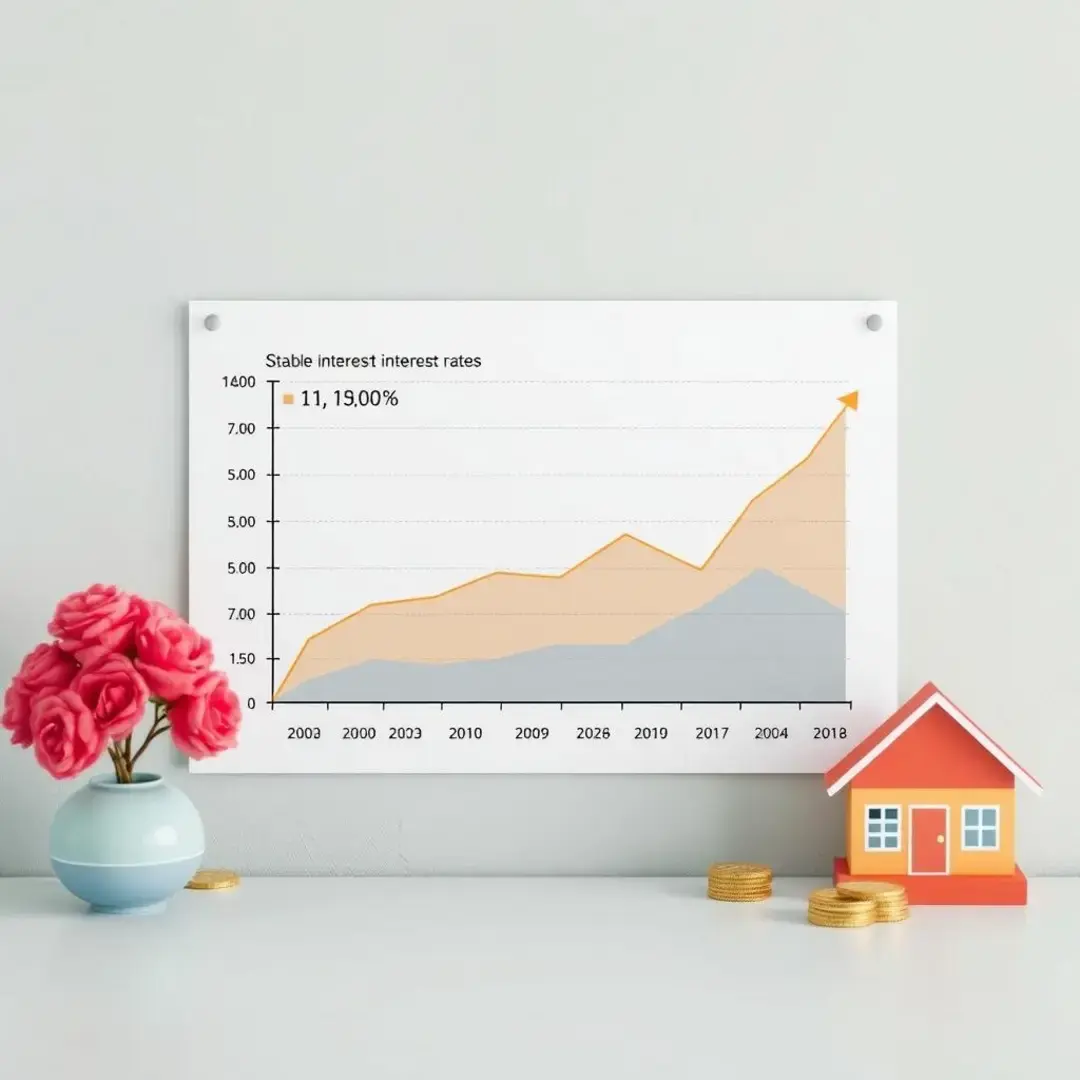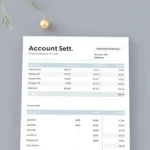Fixed-rate loan: Stable interest on borrowed funds
Understanding fixed-rate loans

What is a fixed-rate loan?
A fixed-rate loan is a type of loan where the interest rate remains constant throughout the life of the loan. This means that borrowers pay the same amount in interest over the entire term, providing predictable monthly payments. Fixed-rate loans are commonly used for mortgages, auto loans, and personal loans, making them a popular choice for many individuals and businesses alike.
One of the primary advantages of fixed-rate loans is the stability they offer. Borrowers can easily budget their payments without worrying about fluctuating interest rates. Additionally, if market rates rise, those with fixed-rate loans benefit as their interest rates remain unchanged, potentially saving them a significant amount of money over time.
However, fixed-rate loans also come with potential downsides. If market interest rates decline, borrowers with fixed-rate loans are stuck paying higher rates, meaning they miss out on lower borrowing costs. Furthermore, these loans can come with less flexibility when it comes to prepayment options compared to variable-rate loans, which can be a concern for some borrowers.
How fixed-rate loans work
The interest rate for a fixed-rate loan is determined at the beginning of the loan term based on a variety of factors, including the borrower’s creditworthiness and prevailing market rates. Lenders assess these factors to establish a risk profile for the borrower, which ultimately influences the interest rate offered.
Fixed-rate loans typically have an amortization schedule, which outlines each payment’s allocation toward principal and interest over time. In the early years of the loan, payments tend to cover more interest than principal, gradually shifting toward a larger portion of principal as the balance decreases. This structure can affect how quickly borrowers build equity, particularly in the case of mortgages.
Some fixed-rate loans may include prepayment penalties, which are fees incurred if the borrower pays off the loan balance ahead of schedule. These penalties are intended to protect the lender’s interest in the loan. It’s essential to review the loan agreement carefully to understand any penalties or restrictions on prepayments, as this can impact overall financial flexibility.
Common types of fixed-rate loans
Mortgages are among the most common types of fixed-rate loans, often spanning 15 to 30 years. These long-term loans allow individuals to purchase homes, with predictable payment schedules helping buyers manage monthly budgets. Fixed-rate mortgages can be particularly appealing to first-time homebuyers, as they provide the certainty needed for such a significant financial commitment.
Fixed-rate auto loans allow borrowers to finance their vehicle purchases with consistent monthly payments. Lenders often offer these loans for terms ranging from three to seven years, making them accessible for various budgets. Though typically shorter than mortgage terms, a fixed-rate option helps borrowers know exactly what to expect without the stress of rising interest costs.
Personal loans can also be fixed-rate, offering borrowers the flexibility to consolidate debt, cover unexpected expenses, or fund large projects. Rates are affected by credit scores and other financial health indicators, but they can be a good choice for those who prefer a predictable payment plan, especially compared to credit cards or other revolving credit options.
Advanced concepts in fixed-rate lending

Interest rate risk and its impact
interest rate risk refers to the potential for fluctuations in market interest rates to affect loan borrowers and lenders. While borrowers with fixed-rate loans may not feel the immediate impact of rising rates, lenders may face challenges if demand decreases or if they need to refinance existing loans at higher rates. Understanding this risk is crucial for both parties in maintaining a stable financial strategy.
Lenders often utilize hedging strategies to protect themselves against potential interest rate fluctuations. By using various financial instruments, they can mitigate risks associated with lending at fixed rates. These strategies can help lenders maintain profitability while offering borrowers stable payments, ultimately balancing the interests of both parties in a fixed-rate agreement.
The role of fixed-rate loans in portfolio diversification
Fixed-rate loans can play an essential role in investment portfolios, as they provide predictable, stable returns. For investors looking to diversify their portfolios, Fixed income assets such as bonds and fixed-rate loans offer a reliable income stream. This balance can be particularly helpful during times of economic uncertainty, ensuring that investors have a secure foundation for their capital.
Fixed-rate loans generally offer more security and predictability compared to adjustable-rate loans, which have rates that fluctuate based on market conditions. While adjustable-rate loans may start with lower initial rates, the uncertainty they carry can lead to payment increases down the line. Borrowers must carefully assess their financial situation and risk tolerance when deciding between these two types of loans.
Fixed-rate loans and the broader economic landscape
The broader economic environment plays a significant role in fixed-rate loan availability and affordability. For instance, changes in central bank interest rates often ripple through the economy, affecting loan offerings and pricing. As such, borrowers looking to secure fixed-rate loans should stay informed about economic trends and forecasts to make well-informed borrowing decisions.
Government regulations and policies can also impact the fixed-rate lending landscape. Programs designed to promote homeownership, for example, may facilitate access to low-interest fixed-rate mortgages. Understanding the nuances of these policies can help borrowers navigate the loan process more effectively, opening doors to more favorable borrowing conditions.
Comparing fixed-rate loans with other loan types

Fixed-rate vs. adjustable-rate loans
When considering fixed-rate versus adjustable-rate loans, it’s essential to weigh the pros and cons of each option. Fixed-rate loans offer stability and predictability, making them ideal for long-term borrowers. Conversely, adjustable-rate loans may start with lower rates but can lead to fluctuating payments, posing significant financial risk if rates rise unexpectedly.
Ultimately, the choice between fixed-rate and adjustable-rate loans depends on individual needs and financial circumstances. Whether you prioritize stability or are willing to embrace the possibility of savings through variable rates, understanding the differences is key. A thorough assessment of your risk tolerance and financial goals will aid in making the right decision.
Fixed-rate vs. variable-rate loans: a nuanced perspective
While fixed-rate loans maintain a consistent interest rate, variable-rate loans fluctuate based on market conditions, making them potentially more cost-effective in the short term. However, the unpredictability of variable rates can complicate budgeting and financial planning, making fixed-rate loans a more appealing solution for those who value predictability.
In complex borrowing scenarios, such as purchasing a home during rising interest rates, it’s vital to consider how each loan type aligns with your long-term goals. Seeking advice from financial professionals can help illuminate the intricacies of fixed and variable-rate loans, enabling borrowers to make well-informed decisions. Education and clarity are paramount in navigating the lending landscape.
Alternative financing options and their implications
As the financial landscape evolves, many borrowers are seeking alternative financing options beyond traditional fixed-rate and variable-rate loans. Innovative financial products such as peer-to-peer lending and crowdfunding have emerged, offering flexibility and diverse funding sources. However, these options can often come with their unique sets of risks and benefits, emphasizing the importance of thorough research.
Borrowers must critically assess the risks and rewards of alternative financing options to make informed choices. With each option presenting different structures, repayment terms, and potential outcomes, understanding the landscape of alternative financing is essential. A strategic approach to selecting the best loan type aligns more effectively with personal or business objectives for sustained financial health.
Strategies for securing the best fixed-rate loan

Understanding your credit score and its impact
Your credit score is a crucial factor that lenders consider when determining interest rates and loan terms. By improving your credit score through responsible credit use, timely payments, and effective debt management, you could secure more favorable fixed-rate loan options. A higher credit score often translates to lower interest rates, resulting in significant savings over the loan’s life.
Don’t hesitate to negotiate loan terms with lenders after understanding your credit profile. Presenting yourself as a reliable borrower can often yield better interest rates or reduced closing costs. Establishing a positive rapport with lenders while being informed about industry standards can go a long way in achieving favorable outcomes.
Shopping around for the optimal interest rate
In today’s digital world, numerous online comparison tools enable you to evaluate interest rates and loan terms from different lenders quickly. By utilizing these resources, you can make informed choices that align with your financial goals. Shopping around empowers you to find the best fixed-rate loan available, potentially saving you a substantial amount of money.
Establishing connections with multiple lenders can also enhance your chances of finding the best fixed-rate loan. Different lenders may offer varied terms and rates, so casting a wider net can result in better options. Through direct conversations and interactions, you can gain insights into lender preferences and requirements, leading to a more tailored loan solution.
Managing your fixed-rate loan effectively
Once you secure a fixed-rate loan, effectively managing it is crucial to long-term financial health. Establish a budgeting plan that accounts for your monthly payment, allowing you to allocate funds appropriately toward your loan repayment. Additionally, consider setting aside extra funds for early repayment whenever possible, which can help reduce the overall interest paid over the loan’s life.
As market conditions change, refinancing your fixed-rate loan can be a strategic move to improve your financial situation. Refinancing can lower your interest rate, reduce your monthly payments, or shorten your loan term. However, it’s essential to consider the potential costs associated with refinancing, including fees and closing costs, to ensure that the benefits outweigh the drawbacks.












